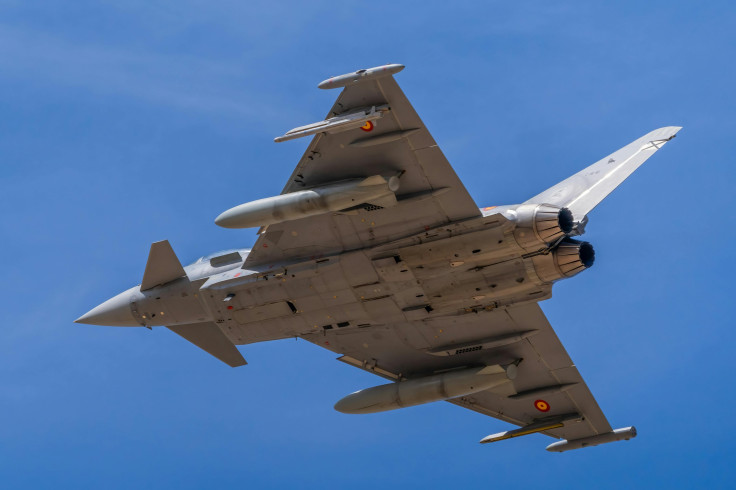Two RAF Fighter Jets Rush From Lossiemouth as Unidentified Plane Approaches UK Airspace
The unidentified aircraft did not enter UK sovereign airspace

Two Royal Air Force Typhoon fighter jets were scrambled from RAF Lossiemouth in Moray on Tuesday after radar detected an unidentified aircraft approaching UK airspace.
The incident, part of a Quick Reaction Alert (QRA), was supported by a Voyager air-to-air refuelling tanker from RAF Brize Norton.
The RAF confirmed the unidentified aircraft did not enter the UK Flight Information Region (FIR) and no interception was required.
Details of the Incident
According to the RAF, Typhoon jets were launched from Lossiemouth to investigate the approach of an unknown aircraft towards the UK's 'area of interest' north of Scotland. A Voyager tanker, call sign TARTAN21, was deployed to maintain a refuelling pattern west of the Shetland Islands to support the fighters.
The aircraft that prompted the scramble was monitored but did not enter sovereign airspace. Once the situation stabilised, the Typhoons returned safely to base. RAF officials said these responses are a routine part of maintaining the integrity of UK and NATO airspace.
What Is a Quick Reaction Alert?
The Quick Reaction Alert system is the RAF's standing mission to respond immediately to potential aerial threats. Typhoons and crews are kept at a high level of readiness, able to launch within minutes of an alert.
QRA responsibilities are split geographically. RAF Lossiemouth in Moray covers the northern approaches to the UK, while RAF Coningsby in Lincolnshire protects the southern sector.
Incidents that trigger a QRA launch include civilian aircraft failing to respond to air traffic control, loss of communication with airliners, or military aircraft operating close to NATO or UK airspace without identifying themselves.
The RAF's rapid reaction capability is also integrated into NATO's collective air policing system, ensuring seamless coordination with allied forces.
Recent Scrambles and Historical Context
Scrambles from Lossiemouth and other RAF bases have occurred regularly in recent years. In April 2025, Typhoons were launched after a civilian aircraft lost communications off the Scottish coast.
Communication was later restored and the plane continued its journey without incident.
Also in April 2025, RAF jets deployed in Poland intercepted a Russian Ilyushin Il-20M reconnaissance aircraft near NATO airspace. In November 2024, multiple Typhoons were scrambled to shadow a Russian Bear bomber over the North Sea.
On several occasions, locals in Scotland have reported hearing sonic booms as Typhoons accelerated to supersonic speeds while responding to alerts. Such events highlight the speed and reach of the RAF's response capability.
Technical and Operational Details
The Eurofighter Typhoon, the RAF's primary air defence aircraft, is a twin-engine multirole fighter capable of speeds exceeding Mach 2. It can rapidly climb to altitude and is equipped with advanced radar and weapons systems for both defensive and offensive operations.
The RAF Voyager tanker, used in this mission, provides air-to-air refuelling to extend the range and endurance of Typhoons. Operating from RAF Brize Norton in Oxfordshire, the Voyager plays a critical support role in QRA missions.
The RAF monitors an 'area of interest' that extends beyond the UK's sovereign airspace to detect and deter potential threats before they reach national territory. Operations are closely coordinated with NATO allies to ensure a unified response to any incursion into European airspace.
© Copyright IBTimes 2025. All rights reserved.





















